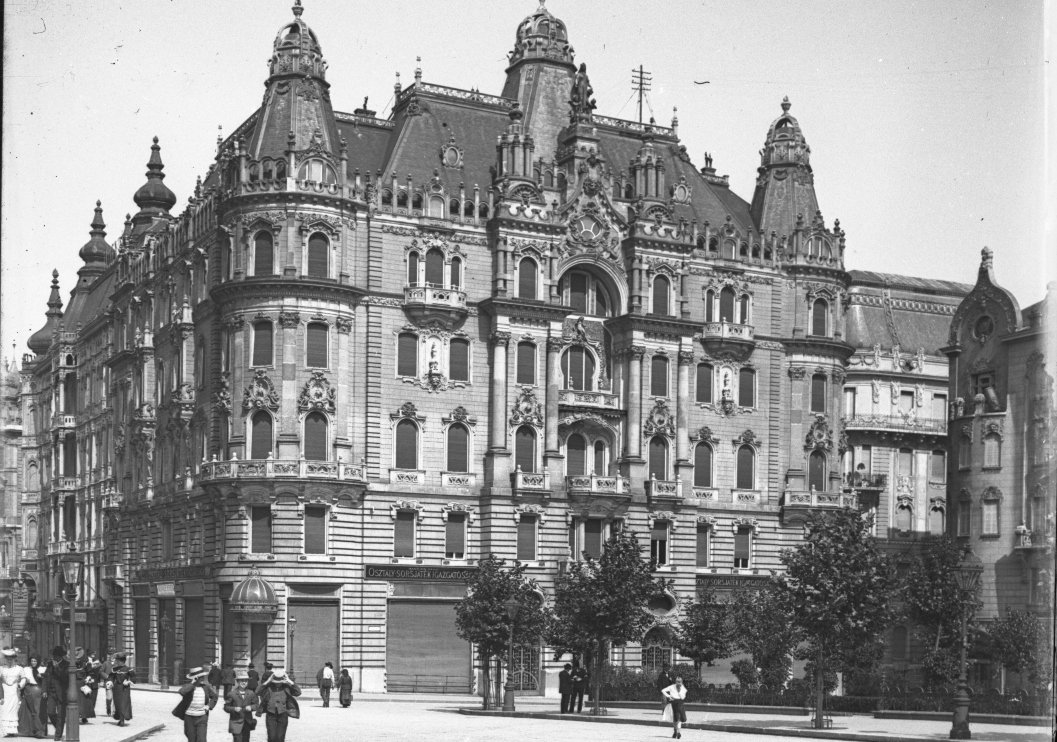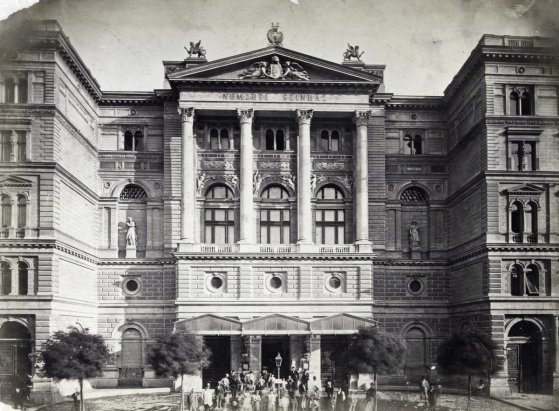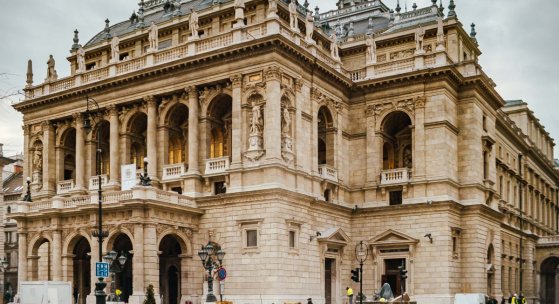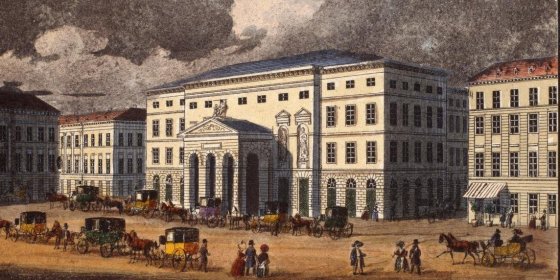 The „intertwined history” of the bridges and the city of Budapest
Which ideas and events have shaped the fate of bridges of Budapest and the cityscape? Alongside many other interesting facts, this question is also answered this newly published book by the Budapest City Archives, which introduces the history of bridges in Budapest.
The „intertwined history” of the bridges and the city of Budapest
Which ideas and events have shaped the fate of bridges of Budapest and the cityscape? Alongside many other interesting facts, this question is also answered this newly published book by the Budapest City Archives, which introduces the history of bridges in Budapest.
theatre
 There was once a theatre in the Class Lottery Palace - The history of the theatre began 105 years ago on Eskü Square
There was once a theatre in the Class Lottery Palace - The history of the theatre began 105 years ago on Eskü Square
February 12, 2023 at 9:00 AM
Where cars turn down today from the Erzsébet Bridge to the Pest embankment, before World War II, there stood a huge and beautiful building: the Class Lottery Palace. It was built at the turn of the century in the Neo-Baroque style, but Art Nouveau also left its mark on it. However, its interior was remodelled several times, most significantly for Vilma Medgyaszay's theatre. Jenő Lechner made its classicist plans in February 1918, exactly 105 years ago.
The predecessor of Open-Air Stage: The Park cinema opened a 100 years ago in Városmajor
September 14, 2022 at 5:00 PM
Over the past hundred years, a lot has changed in Városmajor, but culture and guaranteed entertainment have always been present and can still be found in the capital's first public park. The predecessor of the Városmajor Open-Air Stage, the open-air Park cinema, opened here more than a hundred years ago, but the fate of the park was also very interesting after that. In 1935, the well-known stage was built, which, along with its surroundings, has undergone continuous transformations over the past century, including recent times.
A 190-year-old proposal to create a permanent Hungarian theatre
July 21, 2022 at 1:30 PM
The first permanent Hungarian-language theatre opened in Pest in August 1837, making a nearly 40-year-old dream come true. The construction of the theatre was given a big boost by a work five years earlier, which put a detailed and thorough proposal on the table on how to establish a Hungarian theatre and ensure its operation in the long term. Its creator was István Széchenyi, who already called the Hungarian capital Buda-pest in 1832.
After almost 5 years, the renovated Opera House opens its doors today
March 12, 2022 at 2:00 PM
Restoration work began in the building of the Hungarian State Opera in October 2017. The renovation, which lasted for almost 5 years, not only serves to further illuminate one of the architectural gems of Budapest, but it also represents the basic requirements of the 21th century. The history of the construction of the Opera House also proves that these requirements have changed from time to time.
The German Theatre in Pest, once the largest theatre in the city, burned down 175 years ago
February 4, 2022 at 9:00 AM
The side of today's Vörösmarty Square facing the Danube has been lined with many buildings over the past 200 years, the first being the German Theatre in Pest [Pesti Német Színház], which was handed over in 1812. Although excellent Hungarian artists of the time also performed in the huge building, which could accommodate 3,500 spectators, such as Déryné and its second conductor was Ferenc Erkel himself, however, the theater could only be used for 35 years, as it burned down on 2 February 1847.
A Second Hall to Thalia – 145th anniversary of the former Népszínház opening
October 14, 2020 at 10:00 AM
An independent theatre for folk plays that is the Popular Theatre or People's Theatre, Népszínház was opened as a home for the genre which had become popular during the Hungarian National Awakening. The building was completed as a result of an increasingly concerted effort and support from the city. Standing on the present-day Blaha Lujza Square, the structure was designed by the Austrian architects Fellner and Helmer, who were well-known for their theatres. The beautiful building in the eclectic-style was opened with much circumstance on 15 October 1875. The building housed the National Theatre from 1908 and was torn down in the spring of 1965.
More articles
 The „intertwined history” of the bridges and the city of Budapest
Which ideas and events have shaped the fate of bridges of Budapest and the cityscape? Alongside many other interesting facts, this question is also answered this newly published book by the Budapest City Archives, which introduces the history of bridges in Budapest.
The „intertwined history” of the bridges and the city of Budapest
Which ideas and events have shaped the fate of bridges of Budapest and the cityscape? Alongside many other interesting facts, this question is also answered this newly published book by the Budapest City Archives, which introduces the history of bridges in Budapest.
 The Bridge Report, which brought a turning point in the history of Budapest
A travel report that changed the history of Pest and Buda, as well as Hungary. The little book contributed to the change of half a thousand years of legal customs and the implementation of an investment of unprecedented size and technical quality. This book was The Bridge Report [Hídjelentés in Hungarian].
The Bridge Report, which brought a turning point in the history of Budapest
A travel report that changed the history of Pest and Buda, as well as Hungary. The little book contributed to the change of half a thousand years of legal customs and the implementation of an investment of unprecedented size and technical quality. This book was The Bridge Report [Hídjelentés in Hungarian].
 Drama on the university wall - The heroic monument was planned 95 years ago
In the constant hustle and bustle of the Egyetem Square in Pest, the students may not even notice the monument that decorates the short section of wall between the church and the central building of ELTE. However, it commemorates their predecessors, the heroes who fought for their country in World War I, and those who heroically helped them. The first design of the dramatically collapsing soldier was born in 1928, ninety-five years ago.
Drama on the university wall - The heroic monument was planned 95 years ago
In the constant hustle and bustle of the Egyetem Square in Pest, the students may not even notice the monument that decorates the short section of wall between the church and the central building of ELTE. However, it commemorates their predecessors, the heroes who fought for their country in World War I, and those who heroically helped them. The first design of the dramatically collapsing soldier was born in 1928, ninety-five years ago.





